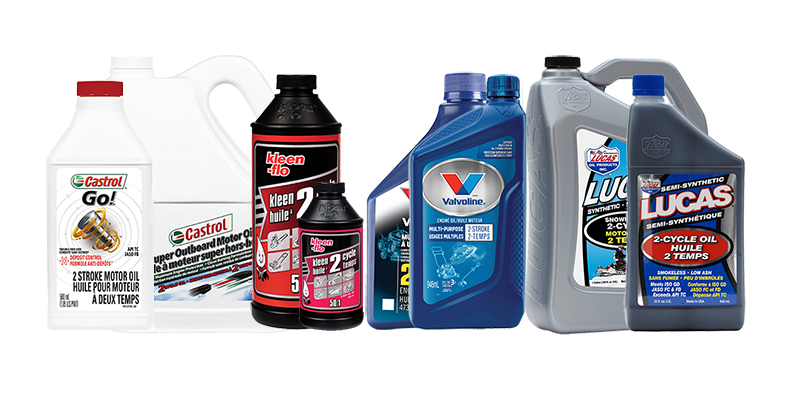Did you know that your two-stroke engine’s performance heavily depends on the type of oil you give it? And not just any oil: two-stroke oil.
Two-stroke oil, often referred to as 2-stroke, two-cycle, or 2-cycle oil, is a lubricant specifically designed for two-stroke engines. Choosing the right oil can help your engine perform at its best and last as long as possible.
Let’s go over the details of two-stroke oil: what it is, how to choose the right one, and how to maintain it.

What Is Two-Stroke Oil?
Two-stroke engines are typically used in motorcycles, power tools, and boat motors. They’re simpler, lighter, and more compact than their four-stroke counterparts. Two-stroke engines complete the combustion process in just two strokes, hence the name. Their high power-to-weight ratio and low maintenance cost make them a popular choice, but they require a special lubricant: two-stroke engine oil.
Two-stroke oil lubricates the moving parts of the engine, minimizing friction and preventing wear and tear. It also maintains an ideal temperature by keeping the engine cool.
Your ideal two-stroke oil mix will have the right viscosity and additives, be able to withstand high temperatures and pressures during combustion, and provide sufficient lubrication. In short, it enhances acceleration and responsiveness. The right oil will also boost engine durability, reduce the need for repairs, and contribute to lower emissions and a cleaner engine.
Choosing the Right Two-Stroke Oil
The two-stroke oil you choose can make or break your engine (literally).
Different engines have different requirements, and using the wrong oil can result in poor lubrication, excessive wear, and damage. Refer to your engine manufacturer’s guidelines or the owner’s manual to find out what your engine needs.
Understanding oil specifications and ratings, such as those set by the International Lubricant Standardization and Approval Committee (ILSAC) or the American Petroleum Institute (API), is also crucial to your choice. These ratings indicate the oil’s quality and performance, ensuring it meets your engine’s requirements. The minimum oil rating for small engines is typically TC-W3.
Finally, consider the oil’s viscosity, which influences its thickness and flow. Engines operating in different temperatures require oils with specific viscosities, and some engines need oils with certain additives for smoke reduction, spark plug fouling, or carbon buildup. Most two-stroke oils have a viscosity of 30.
At NAPA Canada, we offer a wide range of high-quality two-stroke oils that meet all industry standards. Browse our selection in our stores and online at NAPACanada.com.

Maintaining Your Two-Stroke Oil
To get the bulk of its benefits, you have to properly maintain your two-stroke engine oil.
Oil Mixing and Fuel Ratios
Follow the manufacturer’s recommended fuel ratio when mixing oil and fuel for your two–cycle engine. Too little oil can cause a lack of lubrication, while too much can lead to poor combustion. Always measure and mix two–cycle oil accurately.
Regular Oil Changes
Over time, oil can break down and lose its lubricating properties, leading to increased friction and potential engine damage. To avoid issues with your two-stroke engine, change the oil at the manufacturer’s recommended intervals.
Avoid Common Mistakes
Never use the wrong oil. Always opt for a high-quality two-stroke oil that’s designed for your engine. Never mix different brands or types of oils; they may not be compatible, and mixing them could damage the engine. Lastly, store your oil in a cool, dry place to maintain its quality and prevent contamination.
By following these maintenance tips, you can help your engine reach its optimal performance and extend its lifespan.
For any questions about choosing a two-stroke oil, visit your local NAPA Auto Parts store to speak with an expert.





